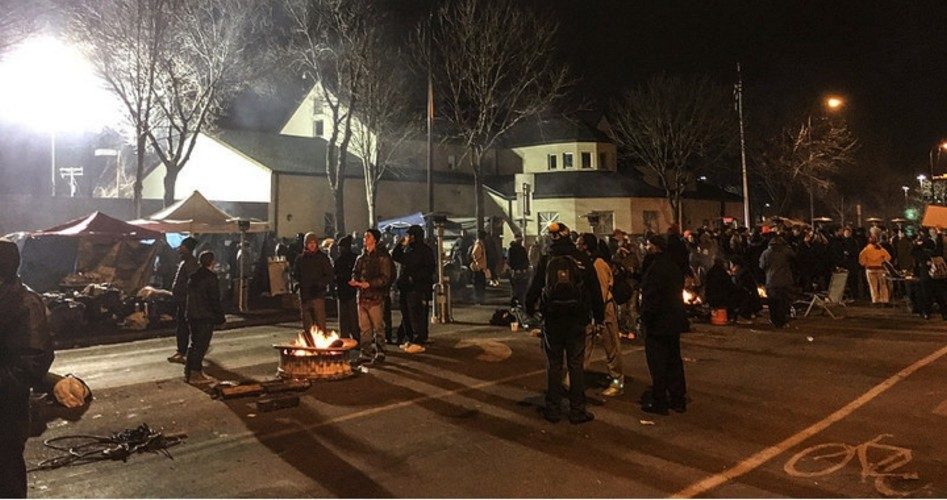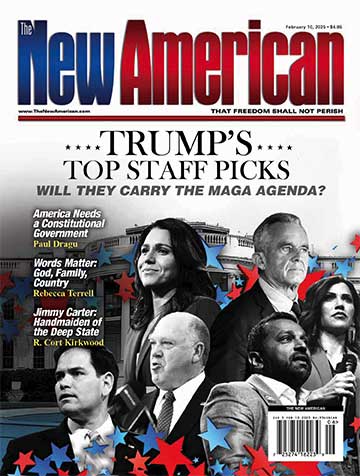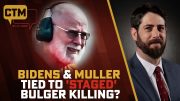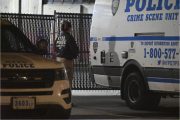
Hennepin County (Minnesota) Attorney General Mike Freeman told the press on Wednesday that the two officers involved in the November 15 shooting of Jamar Clark will not face criminal charges. Federal and internal department investigations into the incident continue.
On the evening of November 15, Clark attacked his former girlfriend to the point where paramedics were called. When Clark attempted to interfere with the EMTs, Minneapolis police officers Mark Ringgenberg and Dustin Schwarze arrived on the scene. When Clark refused to follow those officers’ orders, he was pushed to the ground by Ringgenberg in an attempt to handcuff him. During the brief scuffle, Clark removed Ringgenberg’s firearm from its holster. Fearing for his life, Ringgenberg shouted to his partner for help.
When Clark continued the struggle, Schwarze pulled his own weapon and told Clark to stop or he would be shot: “Let go or I’m gonna shoot you!” Clark shouted back: “I’m ready to die.” Schwarze fired his weapon. Clark died in the hospital the next day after life support was removed.
According to Freeman, Ringgenberg said he felt his weapon move from his right hip to the small of his back. When he reached back to the top of his gun, he felt Clark’s “whole” hand on the weapon. At that moment Ringgenberg shouted to his partner, “He’s got my gun!” Freeman continued:
Ringgenberg believed he was going to die … because he had no control over his gun. Ringgenberg felt that Clark didn’t care what happened to him and remembered thinking that he didn’t want his partner to die with his gun….
At the time he was shot Clark was attempting to gain control of Ringgenberg’s firearm. Ringgenberg reasonably believed that if Clark had succeeded in removing the firearm from its holster, Clark would have shot both officers as well as exposing third parties to danger of injury by firearm….
[Ringgenberg’s partner Schwarze’s] actions were reasonable given both his observations and Ringgenberg’s plea.
The investigation undertaken by Freeman’s office included 122 Minnesota Bureau of Criminal Apprehension reports, 1,370 pages of autopsy reports, 21 DNA reports, and 97 Minneapolis Police Department supplemental reports. It took Freeman 31 hours to review all the relevant material before deciding not to press criminal charges in the incident.
True to form, black radical groups Black Lives Matter and the Minneapolis NAACP instigated the customary protests, camping out not far from police headquarters for 18 days and nights (shown) before finally being forcibly removed. Also true to form, Freeman’s decision was attacked viciously, with vile language and threats to the city proper. The groups chanted “Hey, hey, ho ho, these racist cops have got to go,” while their leaders attacked Freeman and his decision. Raeisha Williams of the Minneapolis NAACP insisted:
Your [Freeman’s] entire narrative today was to push the propaganda of the Minneapolis Police Department. You, Mr. Freeman, did not give a fair and accurate portrayal.
This outburst was followed by a direct threat: “Let me tell you: if this city burns, it’s on your hands!”
Clark, at the tender age of 24 when he died, had a long and vicious criminal record. In 2010, he was convicted of first-degree aggravated robbery, which, under Minnesota state law, is defined as “Whoever, while committing a robbery, is armed with a dangerous weapon … or inflicts bodily harm on another.” The criminal “may be sentenced to imprisonment for not more than 20 years.”
In Clark’s case, likely due to his even more tender age of 18 at the time, he was sentenced to 41 months in prison. Upon his release he faced a second conviction after he threatened to burn down his ex-girlfriend’s apartment in March 2015. According to the AP, “[Clark] threw a brick through his ex-girlfriend’s window and threatened to burn her apartment unit down — leaving behind a trail of lighter fluid to prove it.” At the time of his death, Clark was on probation for that crime.
A restraining order was issued upon complaint by his ex, requiring him to stay away from her until the year 2020. In addition, at the time of his death, Clark was awaiting trial for a high-speed chase arrest in July.
The mayor took the side of the protesters. Following Freeman’s announcement, Minneapolis Mayor Betsy Hodges took over the microphones:
Today is a hard day for everyone in the city of Minneapolis. Many people are feeling hurt, anger, disappointment, frustration, mistrust in a system that has not worked for everyone. My heart breaks for the loss of Jamar Clark’s life and for the pain felt by everyone involved in this incident.
Naturally, nothing was said about the pain and suffering that continues for the officers involved, along with their families. Nor for the continuation of that pain and suffering as the internal department investigation and the Department of Justice investigation continues into the months and possibly years ahead.
All of which has a familiar ring to it. In 1961, the Senate Internal Security Subcommittee heard testimony from Lyman Kirkpatrick, an inspector general on the staff of the director of the Central Intelligence Agency. He testified about a captured handbook, described as an instruction manual, about “scientific mob-making,” which had been distributed to Soviet agents and Communist Party revolutionaries all across the free world.
Ten years later radical revolutionary Saul Alinsky published his Rules for Radicals, after first dedicating his instruction manual to the greatest radical of them all:
Lest we forget at least an over-the-shoulder acknowledgment to the very first radical: from all our legends, mythology, and history (and who is to know where mythology leaves off and history begins — or which is which), the first radical known to man who rebelled against the establishment and did it so effectively that he at least won his own kingdom — Lucifer.
Among those rules are at least three being used by revolutionaries trying to subvert local police and turn them into mere minor agencies of a federal police force:
Rule 5: “Ridicule is man’s most potent weapon.” There is no defense. It’s irrational. It’s infuriating. It also works as a key pressure point to force the enemy into concessions.
Rule 10: “The major premise for tactics is the development of operations that will maintain a constant pressure upon the opposition.” It is this unceasing pressure that results in the reactions from the opposition that are essential for the success of the campaign.
Rule 11: “If you push a negative hard enough, it will push through and become a positive.” Violence from the other side can win the public to your side because the public sympathizes with the underdog.
This is the strategy: Find a shooting of a black by white police (never a shooting of white police by a black) and blow it up out of all proportion, with the help of the media and the powers that be. Instigate street protests lasting days and weeks, just inviting police response that can then be claimed to prove “police brutality.” Demand “reform” that includes federal investigation and intervention, sensitivity training (which began just after the Clark shooting and has already forced two-thirds of the MPD officers to “recognize their own biases”). All of which leads to increasing distrust of local police and the ultimate solution: a national or federal police force with little or no control at the local level where it properly belongs.
This is the pattern seen in the deaths of Michael Brown in Ferguson, Eric Garner in New York, and Freddie Gray in Baltimore. The rules are in place. The radicals and revolutionaries, once the incident in Minneapolis has flamed out, are ready to pounce on the next shooting that fits their agenda.
A graduate of an Ivy League school and a former investment advisor, Bob is a regular contributor to The New American magazine and blogs frequently at LightFromTheRight.com, primarily on economics and politics. He can be reached at [email protected].



